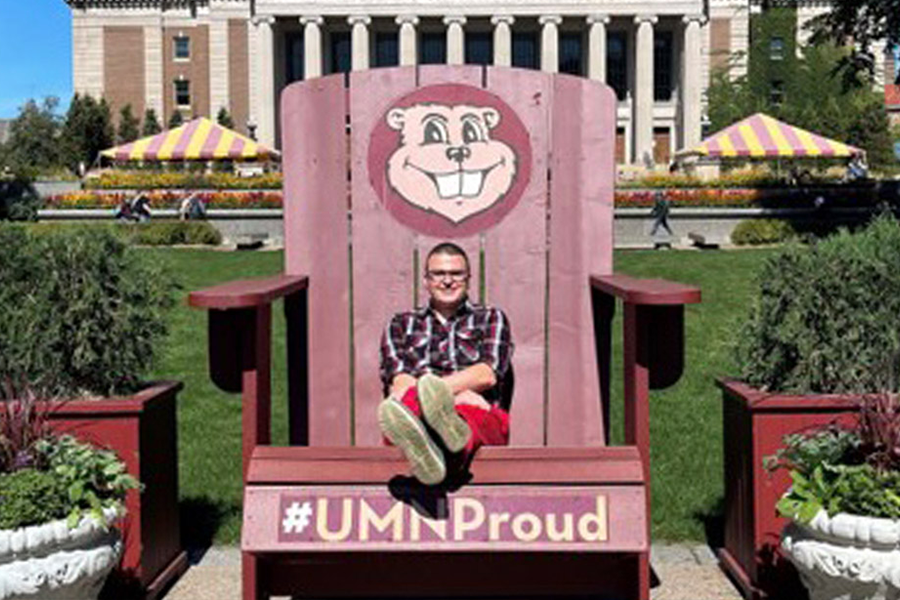
Eric Clemensen knows firsthand the magnitude of opioid use disorder. He’s in recovery himself and knows people who have overdosed and died. The native of Apple Valley, MN, received a BS in alcohol and drug studies from Minnesota State Mankato so that he could become a licensed drug and alcohol abuse counselor. He currently works as a counselor at the prison in Shakopee, MN. In this Q&A, Clemensen talks about his work in the field and the School of Public Health’s Executive Public Health Administration and Policy program.
How did you become interested in public health?
While working in the substance abuse field, I’ve been introduced to public health work and have worked with clients who were actively using. My role has been to supply them with harm reduction tools and resources and it’s really showed me how public health is tied to addiction and drug abuse. I realized that I could do the most good with a master’s in public health degree because I would be able to create plans and programs to support these people who desperately need help. I myself am a person in recovery and I have known many people who have overdosed and died.
What specific issue or area of research in public health do you care the most about and why?
We are in a public health emergency with opioid use disorder, specifically overdoses. I’m very passionate about that, and harm reduction seems to do the most good with keeping people alive. The philosophy with harm reduction is to work directly with the people who are using substances to keep them as healthy as possible, and if they want, to get them on a path to sobriety and then onto recovery. With addiction, the window of opportunity for helping someone get sober is really small and so it’s super important to respond accordingly. Dead people don’t recover, so it’s all about keeping people alive and healthy.
How would you like to help address this issue?
Currently, I work in a treatment setting at the prison in Shakopee, MN. We help get women out of prison up to four years early through an early-release program that includes substance use disorder treatment. This process includes setting them up with what we call “medication assisted treatment.” We’ll provide them with suboxone or vivitrol so that they can stay alive and healthy when they get out. We also do training for how to properly recognize an overdose and how to use naloxone/narcan. I think that everyone should carry naloxone so that they can help anyone in need.
Why did you choose your program and what do you like about it?
The main reason I chose the Executive Public Health Administration & Policy MPH program was because of the ability to work and go to school simultaneously. The people in my cohort bring experience from many different fields and there’s also a big emphasis on social justice. I can tell that there are a lot of skills I’m learning that I will be able to apply to work in the future.
My ultimate goal would be to start a safe consumption site/overdose prevention site. These are sites where people who are using can bring their drugs to the facility and use the drugs there with clean supplies and be in a supervised setting, so that in case of an overdose they can get the help they need. These are evidence-based facilities that can dramatically reduce overdose deaths.
What other public health work are you involved in?
I started a podcast (Stigma’s Toll: A Podcast Series to Reduce the Stigma of Opioid Use Disorder Through Education) where I interview experts in the opioid use disorder (OUD) field to discuss ways we can help people who are using and keep them healthy enough so that they can find their way to recovery. The goal of the podcast is to educate as many people as possible, because education regarding substance use reduces the stigma attached to it. If we can reduce that stigma, they will be more likely to get help sooner and find their path to recovery.
- Categories:
- Health
- Health conditions
- Health policy
- Medical




